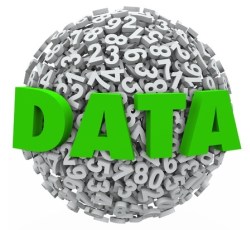By Kash Mansori, WTP Advisors
Posted: June 10, 2015
A colleague recently came to me with a question about where to find a specific type of data needed for a transfer pricing analysis. That got me to thinking about how dependent our work is on the type of data that we have available to us. And the issue of data availability helps to explain one of the great paradoxes of transfer pricing analyses: most transfer pricing studies actually say nothing about transfer prices.
The goal of a transfer pricing study is to ascertain whether the transfer prices applied to transactions between two related companies are consistent with the “arm’s length standard”; that is, whether the prices are consistent with what we would have observed if the two companies had been unrelated. In theory, therefore, one would think that a transfer pricing analysis should involve the identification of market (or “arm’s length”) prices against which to benchmark the transfer prices applied to transactions between related companies.
 Yet in practice it is indeed quite rare to see such direct price comparisons in a transfer pricing analysis. Instead, most transfer pricing studies take a “profits-based” approach in which it is the overall profitability of a company that is examined in detail; actual transfer prices are often never even mentioned in our studies.
Yet in practice it is indeed quite rare to see such direct price comparisons in a transfer pricing analysis. Instead, most transfer pricing studies take a “profits-based” approach in which it is the overall profitability of a company that is examined in detail; actual transfer prices are often never even mentioned in our studies.
This is largely due to data constraints. Many transactions between related companies are transactions that we never actually observe between unrelated companies. And even if similar transactions do take place between unrelated companies, it’s typically impossible to obtain price data that’s detailed enough on transactions that are comparable enough to make direct comparisons.
So instead, we are forced to do what economists have always done: we look where the light is.
While we don’t have data on the specific prices that Company X obtained for selling its goods and services to customers, we do often have very good data on the revenue, costs, and profitability of Company X – particularly if Company X is a public company. And since we have good data on profitability, that’s where we typically focus our attention in a transfer pricing analysis. If the related companies that are transacting with each other each demonstrate profitability similar to what we observe among independent companies, that provides indirect evidence that those related companies were not using transfer prices to shift profits between them.
So it turns out that the data that we have available to us plays an enormous role in determining the methods and types of transfer pricing analyses we can do. It’s not a coincidence that transfer pricing economists end up spending a ton of money – tens or even hundreds of thousands of dollars per year – just to obtain good data. In transfer pricing, as in so many other types of economic studies, the data is the driver’s seat.






Leave a Reply